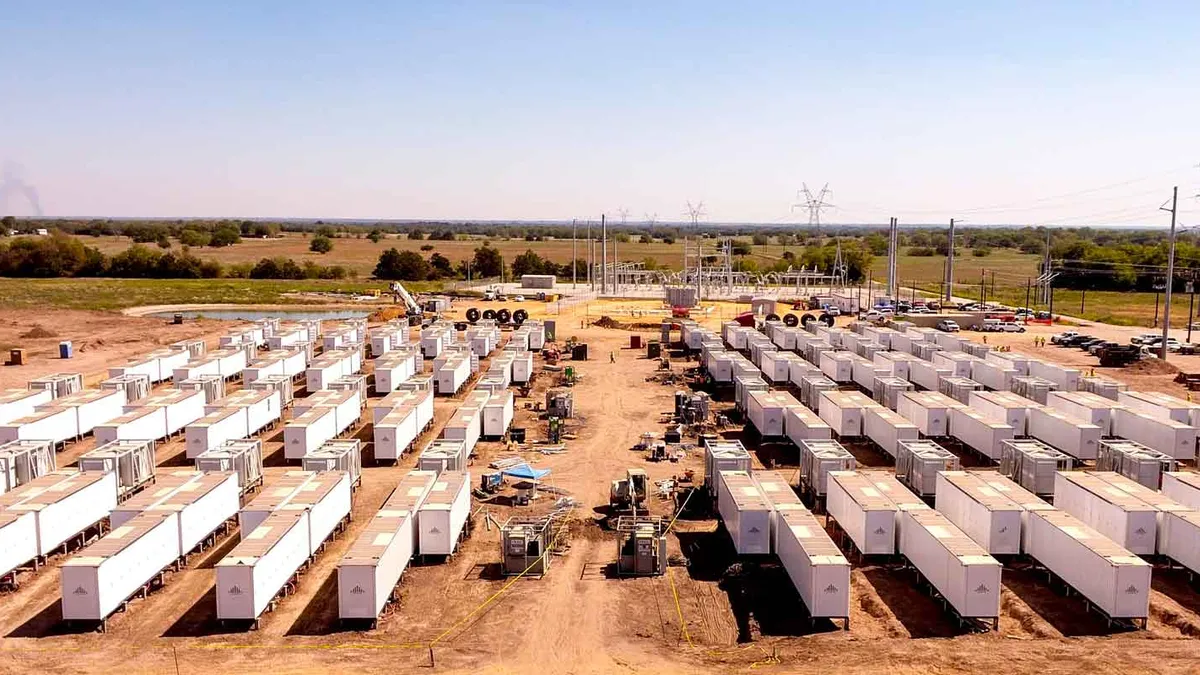Patrick Meyer is the senior vice president of portfolio management at GlidePath Power Solutions.
Texans endured months of extreme heat this past summer and set new records for electric demand in the process. But unlike extreme weather events in the past, the state has been able to avoid the power shortages and brownouts that Texas Public Utility Commission Chairman Peter Lake had warned of. The rapid buildout of battery storage has played a key role in keeping Texas’s lights on.
In 2021, historic winter storms in Texas turned fatal in part because they created widespread power outages. Four million people lost heat and water access when the grid failed. As generators stayed offline, the price of power skyrocketed, causing additional pain for consumers. To avoid a repeat of this tragedy, Texas needed to add additional electric capacity that could deliver on a moment’s notice and stabilize the grid. That’s what batteries do best.
In less than 3 years, energy storage capacity in Texas has increased roughly tenfold and the grid held up throughout this past summer’s heatwave. With more than 3,000 MW of battery storage online, ERCOT was able to call on batteries to keep the lights on when power plants tripped offline or forecasts went wrong. And this grid stability meant that major price spikes were less common and shorter lived, making it easier for Texans to pay their electricity bills.
For example, in mid-August, a 1.8 GW discharge from batteries into the grid quickly reduced wholesale electricity prices from $5,000 to $2,700 per megawatt hour. Without energy storage, that kind of generation loss would have likely caused outages to spread across the region and kept prices maxed out for much longer.
As a Houston resident who’s helping operate some of Texas’ leading battery storage facilities, I’m proud to see batteries are making a difference here. And I know that the example we’ve set in Texas can be applied across the country throughout the entire storage industry.
For example, storage operators in ERCOT got a crash course in navigating volatile times this summer. We faced price caps, market watches, energy conservation notices, Responsive Reserve Service deployments, ERCOT Contingency Reserve Service deployments, and an Energy Emergency Alert event, while setting new records for demand. These challenges tested a wide variety of scenarios and showed that storage will play a big role in electric reliability, not only here in Texas but across the U.S. in places facing similar levels of demand.
Electric grids all over the U.S. are following some of the same trends as Texas. Aging fossil fuel plants are retiring, more variable wind and solar resources are coming online, and extreme weather is increasing power outages and pushing demand to new heights. All of this calls for more energy storage that can quickly and safely stabilize our grid.
Energy storage technology is revolutionary. This is the first time in history that humans can efficiently store a previously unstorable commodity — electricity. And we are just beginning to tap into the ways that energy storage can benefit our communities. Storage technology is improving year over year and making major improvements in areas like monitoring, temperature control and duration efficiency. Developers are combining better technology with market strategies to open up more options to participate in a variety of electric markets and offer maximum benefits to the grid.
Storage operators are collaborating with regulators to determine the role storage will play in the future of our electric system. For example, in ERCOT working groups, companies helped regulators understand state of charge management and improve their ancillary services guidelines. With that kind of collaboration, storage can help mitigate some of the biggest risks facing our communities.
Given these benefits, it's no surprise that the energy storage industry is poised for massive growth. The key to creating more success stories will be to focus strategic development in the areas of the grid where storage solves problems and use real world experience to improve technology, markets and development.
Correction: This story has been updated to correct the amount that wholesale electricity prices dropped in ERCOT last August after a 1.8 GW discharge of batteries.














